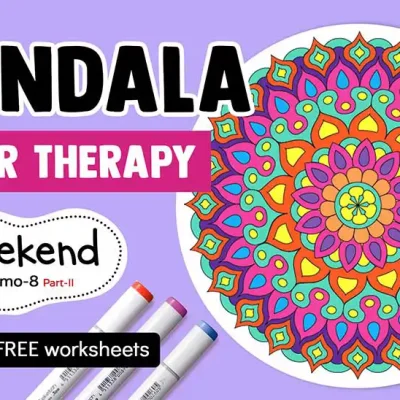
End of Content.
End of Content.
There are four different pencil tips artists use for sketching and shading, each creating a unique effect on the drawing surface.
These tips are the 1. Sharp point, 2. Rounded point, 3. Blunt point and 4. Chisel point.
Knowing which pencil tip to use for different shading techniques will help you draw what you see with more precision.
The sharp point is the fine tip that forms after sharpening the pencil. During most of your drawing process, you’ll use a sharp point.
This tip allows the graphite to fit into the “tooth” of the paper, leaving a smooth line without visible white dots.
To maintain a sharp point as the pencil dulls, use a sandpaper block. Gently rub the pencil tip at an angle while rotating it to create a sharp, precise point.
When using a sharp pencil, avoid pressing too hard on the paper to prevent damaging the surface and making it difficult to add more value.
The rounded point occurs when the pencil has worn down. This tip is great for shading larger areas.
Unlike the sharp point, the rounded tip won’t reach deeply into the paper’s texture, leaving a lighter value. To condition the paper before using this tip, make sure the surface is smooth.
To create a rounded point, gently rub the pencil on sandpaper while rotating it. This tip will cover a wider area with graphite, creating a softer, more even shade.
The blunt point is the most versatile. The sharp edge can be used for detailed marks and fine lines, while the flat surface is perfect for broad strokes, glazing, and creating thick or thin effects.
To create a blunt point, sharpen the pencil, hold it at an angle, and lightly rub it on fine sandpaper.
A chisel point features a flat surface on one side, allowing for wide coverage with the flat edge and finer detail with the sharp tip.
To create a chisel point, sharpen the pencil with a regular sharpener, then rub it on the sandpaper at an angle until the flat surface is formed.
The chisel point covers the most area and leaves more white spots on the paper, as it only deposits graphite on the highest points of the paper’s texture.
Mastering the different pencil tips will enhance your drawing experience. Instead of focusing on which technique to use, you’ll be able to focus more on your creativity and the art itself.
Each pencil point works best with specific pencil grades:
There are four different pencil tips artists use for sketching and shading, each creating a unique effect on the drawing surface.
These tips are the 1. Sharp point, 2. Rounded point, 3. Blunt point and 4. Chisel point.
Knowing which pencil tip to use for different shading techniques will help you draw what you see with more precision.
The sharp point is the fine tip that forms after sharpening the pencil. During most of your drawing process, you’ll use a sharp point.
This tip allows the graphite to fit into the “tooth” of the paper, leaving a smooth line without visible white dots.
To maintain a sharp point as the pencil dulls, use a sandpaper block. Gently rub the pencil tip at an angle while rotating it to create a sharp, precise point.
When using a sharp pencil, avoid pressing too hard on the paper to prevent damaging the surface and making it difficult to add more value.
The rounded point occurs when the pencil has worn down. This tip is great for shading larger areas.
Unlike the sharp point, the rounded tip won’t reach deeply into the paper’s texture, leaving a lighter value. To condition the paper before using this tip, make sure the surface is smooth.
To create a rounded point, gently rub the pencil on sandpaper while rotating it. This tip will cover a wider area with graphite, creating a softer, more even shade.
The blunt point is the most versatile. The sharp edge can be used for detailed marks and fine lines, while the flat surface is perfect for broad strokes, glazing, and creating thick or thin effects.
To create a blunt point, sharpen the pencil, hold it at an angle, and lightly rub it on fine sandpaper.
A chisel point features a flat surface on one side, allowing for wide coverage with the flat edge and finer detail with the sharp tip.
To create a chisel point, sharpen the pencil with a regular sharpener, then rub it on the sandpaper at an angle until the flat surface is formed.
The chisel point covers the most area and leaves more white spots on the paper, as it only deposits graphite on the highest points of the paper’s texture.
Mastering the different pencil tips will enhance your drawing experience. Instead of focusing on which technique to use, you’ll be able to focus more on your creativity and the art itself.
Each pencil point works best with specific pencil grades:



We offer a wide range of worksheets, including drawing worksheets, mandala worksheets, coloring pages, kids’ activity sheets, and step-by-step drawing video tutorials.
© 2025 vaareesaa.com